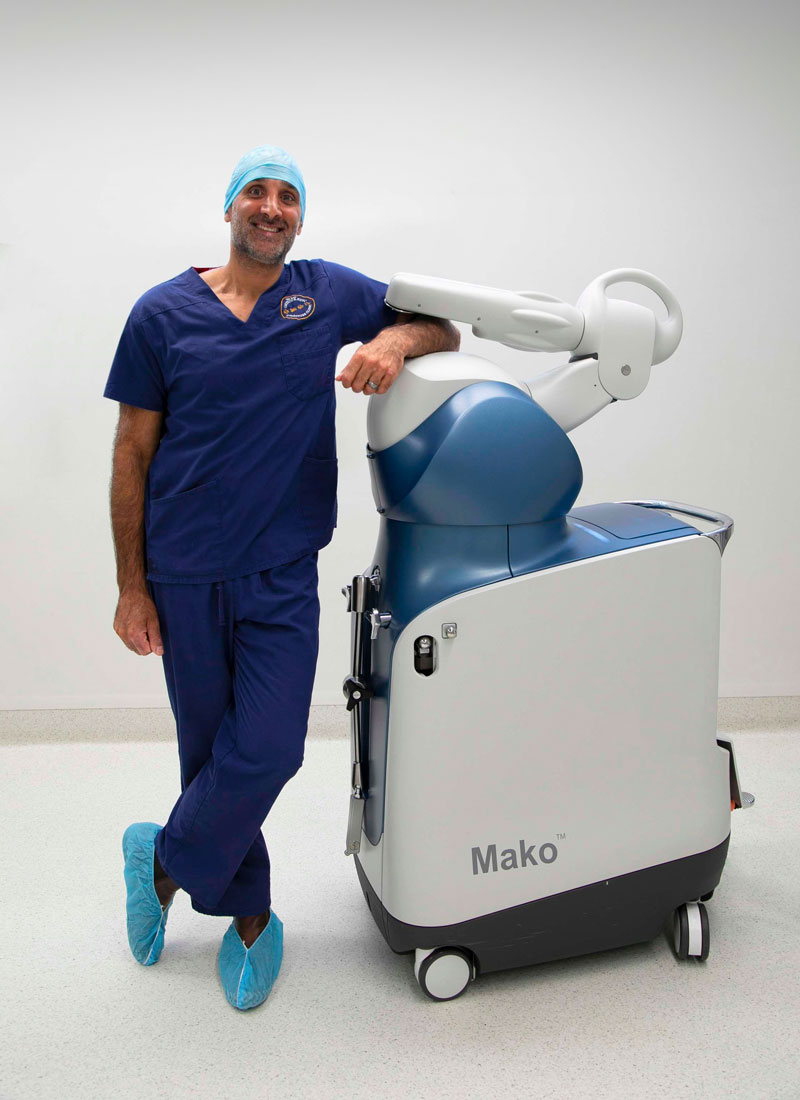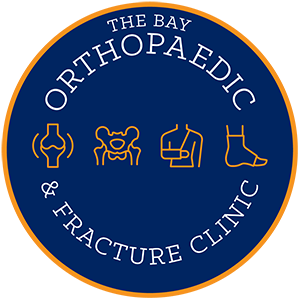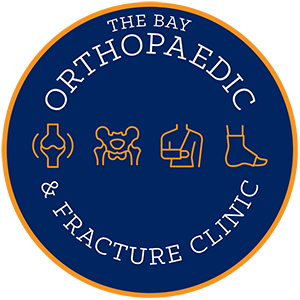Partial knee replacements resurface just one section of the knee that is arthritic. There are 3 main parts to the knee, and most commonly it is the inside or ‘medial’ partial knee, followed by the outside or ‘lateral’ partial knee, then the kneecap or ‘patellofemoral’ that is replaced.
It’s a great operation for those that have had worsening knee pain for several years and it's starting to impact on your enjoyment of life. However there are more stringent criteria on those that are eligible for a partial knee, and patient selection is key to give these implants the best long term outcome and you the best result.

Partial knee replacements are used with the aim of a quicker recovery and a more natural feel.
Partial knee replacements have been available for many years, but historically have been more technically challenging than total knee replacements. With the advent of robotic surgery allowing more accurate placement and bone cuts[1], partial knees replacements done with Mako robotic assistance are now the most common way these are performed in Australia. Implant positioning must be linked to ligament balance of the knee. Robotics have been extremely useful in assisting reproducible placement of the implants in the ideal position to get good bone support, obtain good ligament balancing, and a smooth transition between the implant and the natural bone.
To assist us in achieving ligament balance and accurate implant placement, we use modern technology with the Mako robot. Prior to surgery we get a CT scan to ensure we have a virtual 3-Dimensional model of your own personal knee joint, as well as its relationship to the hip and ankle, before planning positioning of your joint replacement. During surgery we look at the preoperative plan and adjust it slightly depending on how tight or loose the ligaments are within the knee at various positions. We then make sure that only the essential bone is removed, and the implants are positioned very accurately[1] with robotic guidance. The haptic boundaries also mean that the saw cuts are constrained to only take away the essential bone, with the aim of less damage to the soft tissues, and the potential of less postoperative pain and a quicker postoperative recovery.[2]
After surgery we would expect you to be in hospital 2-3 days, walking with crutches until weeks 2-3, a single stick for support until week 6, then walking without aids. Most of the discomfort and swelling will have resolved by week 4, but wont completely settle until 3-4 months. Physio is important following a knee replacement to help you get your range of motion and reduce swelling.
We have much more information to give you about robotic joint replacements!
If you wish to discuss this further please call the reception team on 07 4128 0736 and they’ll be happy to help.
© 2022- The Bay Orthopaedic & Fracture Clinic | Privacy Policy | Disclaimer | Website design:



